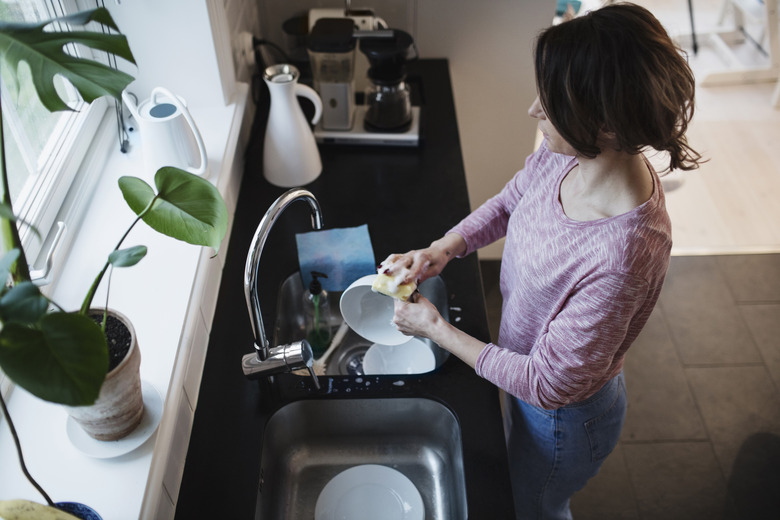How To Clean Moldy Dishes
Dishes covered in mold are not only unappetizing, they are unsanitary. Cleaning mold off dishes before using them can be important to maintaining good health. According to the Centers for Disease Control and Prevention, some people experience symptoms such as nasal stuffiness, wheezing or more severe reactions like lung infections when exposed to mold. Given that mold on silverware and other dishes can be problematic, it's a good idea to know the basics of cleaning mold off dishes.
Cleaning Mold off Dishes
Cleaning Mold off Dishes
If your dishes become covered in mold, it's a good idea to thoroughly clean them as soon as possible. First, try cleaning the mold off with hot, soapy water. In many cases, this is all you need do to safely remove the mold. If the mold readily washes off, and you are able to thoroughly clean the dishes with some scrubbing, then you should be able to use them safely. On the other hand, if you try to wash mold off dishes or silverware and it doesn't come off completely, or stains, you need to sanitize the dishes in order to remove the mold.
If mold on dishes doesn't respond to hot, soapy water, you may have to use vinegar. Vinegar is acidic, and mold doesn't respond well to those conditions. As a matter of fact, mold may quickly and easily disappear once you've scrubbed the dishes with vinegar. If vinegar still doesn't seem to have sufficiently cleaned your dishes from mold, it's time to use bleach to clean off your dishes.
Using Bleach to Clean Mold
Using Bleach to Clean Mold
When cleaning mold off dishes with bleach use caution, as bleach is a caustic liquid that can stain surfaces. Bleach can easily stain fabrics and surrounding surfaces, such as countertops. It's best to use bleach to clean off dishes inside of a sink or in a dishpan. This will help prevent the bleach from staining anything.
To clean dishes with bleach, start by mixing the bleach with water. According to Stop Foodborne Illness, a mixture of ¼ teaspoon of bleach to 1 quart of cool water is an effective bleach mixture. This solution does a good job of removing the mold and sanitizing the dishes. Rinse thoroughly after cleaning dishes and silverware with this solution.
Getting Rid of Dishwasher Mold
Getting Rid of Dishwasher Mold
Sometimes if you put dirty dishes in the dishwasher and leave them for a time, they may develop mold. This is common if you left food residual on the dishes for more than two or three days. The bacteria in the food left on the dishes grows mold. If you find that mold grows on dishes in the dishwasher, it's a good idea to "de-mold" the interior of the dishwasher. According to GE Appliances, there is an ideal way to remove mold from inside a dishwasher's interior or gasket.
Use the following mold removal procedure to clean the interior of a dishwasher of mold. Mix 3 cups of water to a ½ cup of bleach. Dip a rag or sponge into the mixture and use the liquid to thoroughly clean the interior of the dishwasher and the gasket. After you've cleaned the interior of the dishwasher, run the machine through a rinse cycle while empty. This will remove any cleaner left in the dishwasher that could potentially remain on dishes.
Note: Never mix ammonia and chlorine bleach together for cleaning. This mixture creates a toxic gas that can threaten your life.
Read more: How to Remove Mold & Mildew From the Interior of a Dishwasher
Preventing Mold on Dishes
Preventing Mold on Dishes
Mold thrives in areas with high moisture level content, according to the CDC. This means the drier you can make the environment surrounding your dishes, the less likely you'll find any mold. To ensure that there's no mold on dishes in the cabinet, thoroughly dry dishes before storing. Otherwise you could end up with mold on your dishes.
You want to eat off dishes that are sparkly clean and sanitary. If you are having difficulty with mold on dishes, it's time to locate the source of moisture that is causing the mold and stop the moisture exposure. Doing this will help keep your dishes mold-free.
